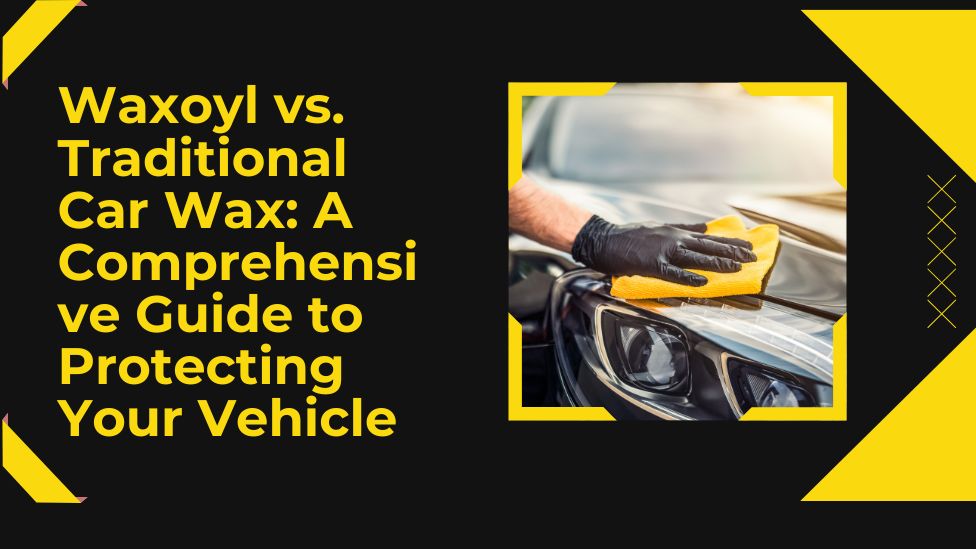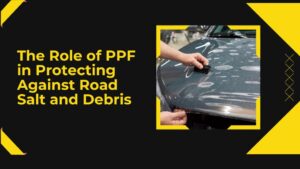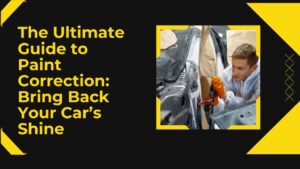When it comes to protecting your car’s exterior, you have several options—from traditional waxing to advanced ceramic coatings. But how does Waxoyl, a renowned rust-proofing and protective treatment, compare to conventional car waxes and modern ceramic sprays?
In this guide, we’ll explore:
- The difference between waxing and polishing a car
- How long ceramic wax lasts compared to traditional wax
- Whether ceramic spray is better than wax
- Why Waxoyl stands out as a long-term protective solution
Waxing vs. Polishing: What’s the Difference?
Many car owners confuse waxing and polishing, but they serve entirely different purposes:
Polishing a Car
- Purpose: Removes minor scratches, swirl marks, and oxidation.
- Process: Uses abrasives to smooth the paint surface.
- Result: Enhances shine but does not protect against UV rays or contaminants.
Waxing a Car
- Purpose: Adds a protective layer to shield paint from UV rays, dirt, and water.
- Process: Applies a wax (natural or synthetic) that bonds to the paint.
- Result: Provides a glossy finish and short-term protection (typically 1-3 months).
Key Takeaway: Polishing prepares the surface, while waxing protects it. For maximum durability, many drivers now opt for ceramic coatings or specialized products like Waxoyl.
How Long Does Ceramic Wax Last?
Ceramic wax (or ceramic coating) is a popular alternative to traditional carnauba or synthetic waxes. Here’s how it compares:
| Type of Protection | Durability | Protection Level |
| Traditional Wax | 1-3 months | Good against water and UV rays |
| Ceramic Spray Wax | 6-12 months | Superior hydrophobicity and scratch resistance |
| Professional Ceramic Coating | 2-5 years | Extreme durability and chemical resistance |
| Waxoyl (Rust Protection) | 1-2 years (reapplication recommended) | Long-term corrosion prevention |
Ceramic wax lasts significantly longer than traditional wax, but Waxoyl offers a different kind of protection—focusing on underbody and chassis rust prevention, making it ideal for harsh climates.
Is Ceramic Spray Better Than Wax?
The debate between ceramic spray and traditional wax depends on your needs:
Pros of Ceramic Spray
✔ Longer-lasting (6-12 months vs. 1-3 months for wax)
✔ Better water beading (hydrophobic properties)
✔ Easier application (no buffing required in some cases)
Pros of Traditional Wax
✔ Warmer, deeper gloss (especially with carnauba wax)
✔ More forgiving application (easier to correct mistakes)
✔ Lower upfront cost
Where Does Waxoyl Fit In?
While ceramic sprays excel in paint protection, Waxoyl specializes in anti-corrosion and is often used in:
- Underbody sealing
- Chassis protection
- Hidden cavities prone to rust
If you want both paint and rust protection, combining a ceramic spray with Waxoyl for undercoating is an excellent strategy.
Why Choose Waxoyl for Long-Term Protection?
Unlike surface waxes, Waxoyl penetrates metal surfaces to prevent rust. Here’s why it’s a top choice:
Benefits of Waxoyl
- Long-lasting rust prevention (1-2 years per application)
- Self-healing properties (creeps into seams and joints)
- Flexible coating (won’t crack like some underbody sealants)
- Ideal for classic cars, off-road vehicles, and daily drivers
How to Apply Waxoyl
- Clean the surface – Remove dirt, grease, and existing rust.
- Shake the can well – Ensures even application.
- Spray or brush on – Focus on wheel arches, chassis, and hidden cavities.
- Reapply as needed – Typically every 1-2 years for best results.
Final Verdict: Waxoyl vs. Ceramic vs. Traditional Wax
| Product | Best For | Durability |
| Traditional Wax | Short-term shine and protection | 1-3 months |
| Ceramic Spray | Long-lasting paint protection | 6-12 months |
| Waxoyl | Rust prevention and underbody protection | 1-2 years |
Best Approach for Maximum Protection
- For paint: Use a ceramic spray wax for long-lasting shine.
- For rust prevention: Apply Waxoyl to vulnerable areas.
- For maintenance: Polish before waxing for the best results.
Conclusion
Understanding the difference between waxing and polishing, the longevity of ceramic wax, and whether ceramic spray is better than wax helps you make an informed decision. While ceramic coatings excel in paint protection, Waxoyl remains unmatched for rust prevention.
For a complete car care routine, combine ceramic spray for the exterior and Waxoyl for underbody protection—ensuring your vehicle stays pristine and rust-free for years.



